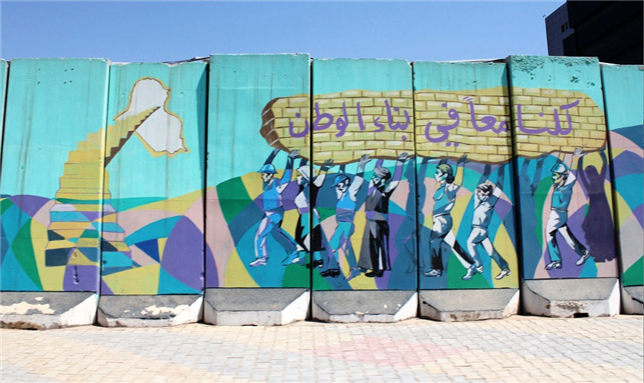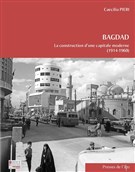Since April 2007, Baghdad has been experiencing a walling strategy designed by the US-led Multi-National Forces (MNF) occupying Iraq then. Between 2005 and 2008, kidnappings, assassinations and population displacements became the main tactics used by the Sunni insurgency and Shiite militias in their struggle to delimit newly homogenized areas over which they could gain spatial control and power. The MNF justified their strategy of surrounding some neighborhoods with concrete blast walls (also known as “T-walls”) as a way of protecting city residents from the urban violence severely affecting daily life in Baghdad. By preventing hostile groups from penetrating neighborhoods, kidnapping people or using car-bombs and suicide-bombers, these security walls brought a limited and temporary solution to the effects of the sectarian violence, but did not address its causes. With time, they progressively became the physical manifestations of a spatial reordering of the city along the same ethnic/sectarian and politicized dividing lines that have transformed Baghdadi society (see Damluji 2010, musingsoniraq, and Iraq green). In 2008, the US army, the Iraqi government, and some foreign associations commissioned a 100,000 dollars budget beautification campaign to subsidize murals on the recently built T-walls, as to mask the “ugliness” of the barriers. This resulted in the creation of a whole series of paintings all over Baghdad, led by the local municipalities.
This essay is the result of personal and regular fieldwork conducted in Baghdad on this subject since 2010. It has been quite difficult to communicate about this matter since, as was the case before the 2003 war, taking pictures in the street is becoming more and more risky, and photographing the walls—as other sensitive places like check-points, banks, and public buildings—is forbidden. Nevertheless, this essay marks a first attempt at decoding the themes of this new visual urban iconography, still present in Baghdad by the end of 2013. By addressing the issue of political narrative through so-called urban beautification in a militarized context, it aims at challenging various positive discourses produced around, and about these murals, mainly in Iraq and in the United States. It shows how the T-wall murals are the result of a blurring discourse about Iraqi unity, at a time when Baghdad is more and more fragmented.
Officially Commissioned Art in Modern Baghdad: A Well-Established Practice
Some of the painters who were selected to create murals for the blast walls seemed to sincerely agree with the need to beautify Baghdad. They defined their intervention as inventing a new “blast wall art,” and called themselves Jama’at al- Jidar, or the Walls Group. Yet, it was clear from interviews I conducted with Baghdadis that “every single image was the result of a precise decision between the painters and the commissioning body,” according to Muhamad al-Rubaye in February 2011 (the head of the Strategic Planning Committee of the Baghdad Governorate Council at that time.) Also, according to artist and art gallery director Qasim Sabti, the painters “had to resist sectarian pressures.” Baghdad’s T-wall murals do not display religious themes (such as images of Imam Ali and Husayn). Though such images are increasingly visible in Baghdad, they are more commonly printed on cheap posters, small flags, or photographs that are sold everywhere in the city rather than on murals.
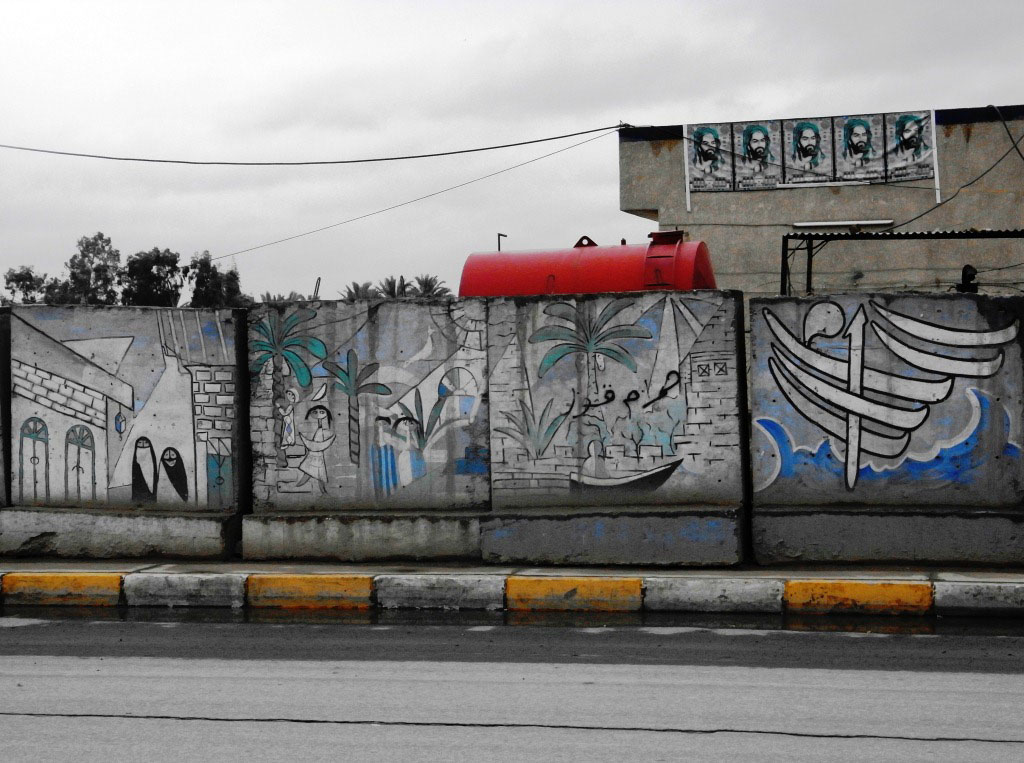
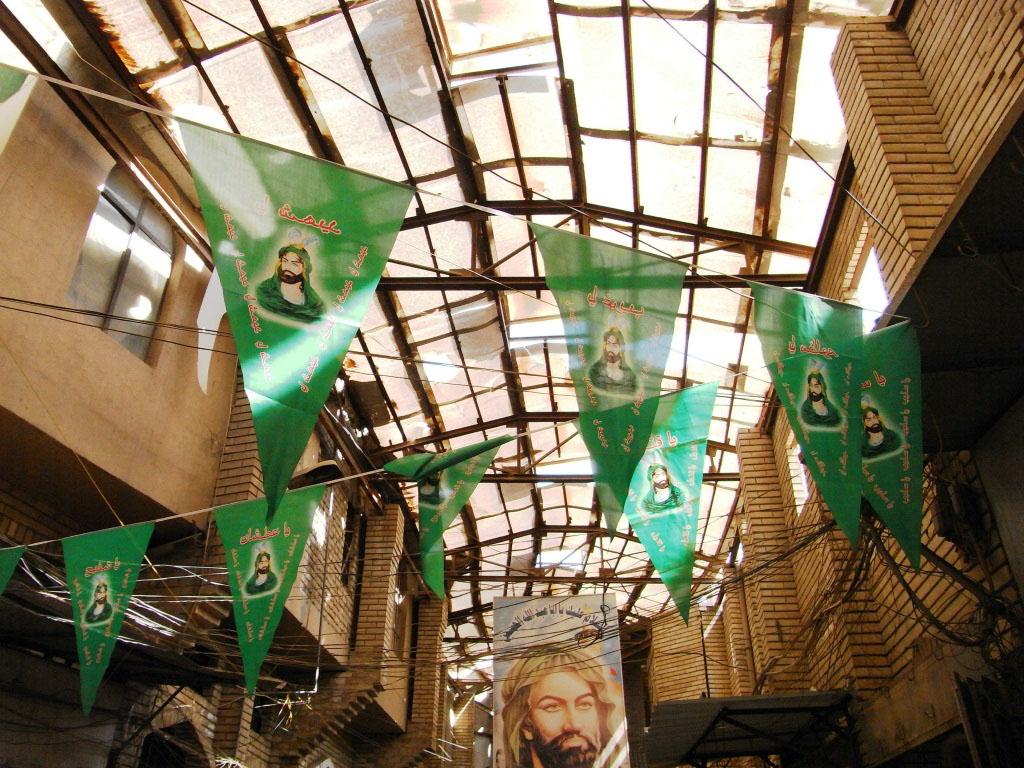
[Figs.1 and 2: In Sadr City, this mural displays human silhouettes in the style of the Iraqi pioneer Jawad Saleem (left),
and Imam Husayn`s picture is visible on posters or flags at the Suq as-Safafir, Rusafa (right). Images by C. Pieri, March 2010.]
It seems that the first commissioned T-wall murals in Baghdad appeared in 2003 inside the securitized compound of the French Embassy. A dozen of painters had carte blanche to illustrate the topic of peace, and they chose to show female figures in the tradition of the Arabian Nights. To the best of my knowledge, these murals are probably the only examples in Baghdad to display this iconic theme. Among the most recurrent themes painted on these T-walls is Mesopotamia, the founding period of Iraqi history. Images such as the lady of Ur, Babylonian lions and hunting scenes, the Ishtar Gate, and the priest Dudu seemingly serve to recall a mythic identity recently violated by wars and violence.
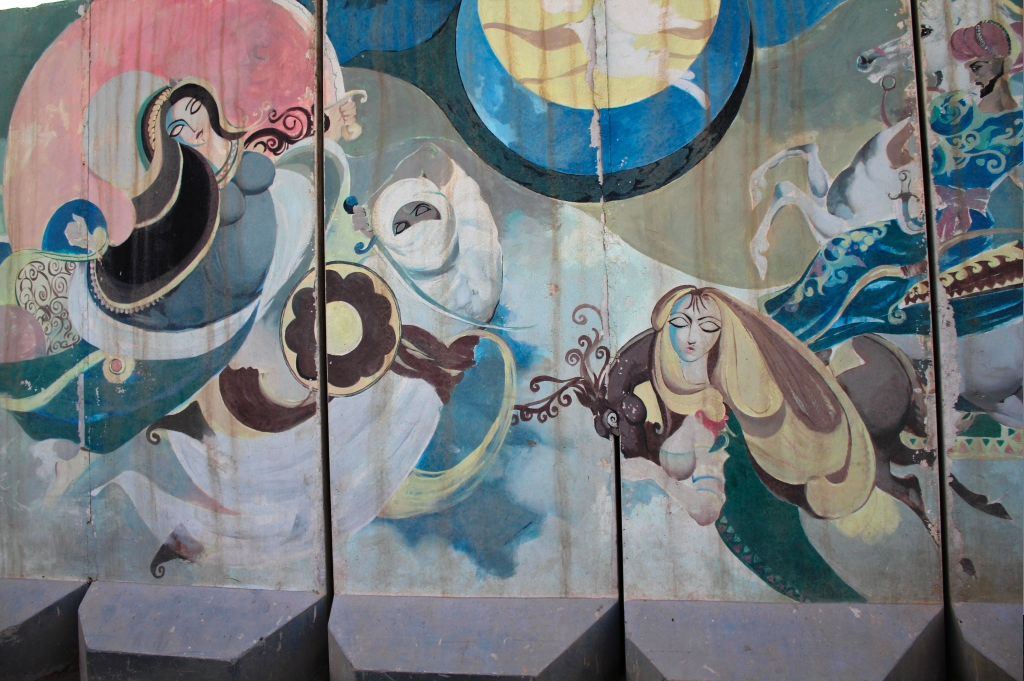
[Fig.3: This mural is located inside the compound of the French Embassy, as part of a series which was commissioned
in December 2003. Here, a piece by the painter Qais al-Sindy. Image by C. Pieri, April 2013.]
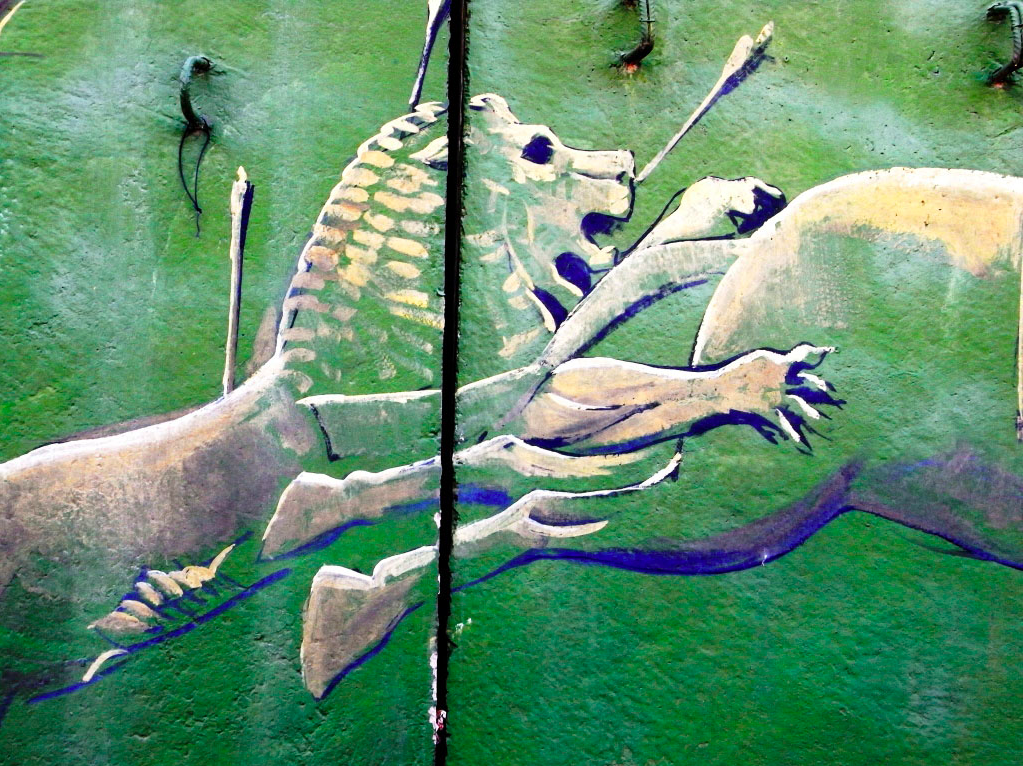

[Figs.4 and 5: Mesopotamian icons commissioned by the Baghdad Governorate (left),
and murals in front of the French Institute, Abu Nuwas Avenue (right). Images by C. Pieri, April 2013.]
Painters also use regionalism to illustrate an ideally unified Iraq from south to north: from the Marshes (traditional mudhif of the South) to Kurdistan (Kurdish countrymen harvesting or dancing the local dabké kurdiyé). Likewise, some murals display quotes, or pastiches from Iraqi masters like Khalid al-Rahal in front of the Iranian Embassy in Salhiya, Jawad Saleem in Karkh next to the Mansour Melia Hotel, or the horses in the style of Faiq Hassan on Palestine Street near Sadr City as well as in Masbah. Finally, everywhere, these T-wall murals convey the rhetoric of loss, with images of the shanashil houses (the Iraqi version of latticed mashrabiyehs), recalling the fantasized vanished city, Baghdad min zaman (“Baghdad once upon a time”), as many residents say when speaking of the traditional city.
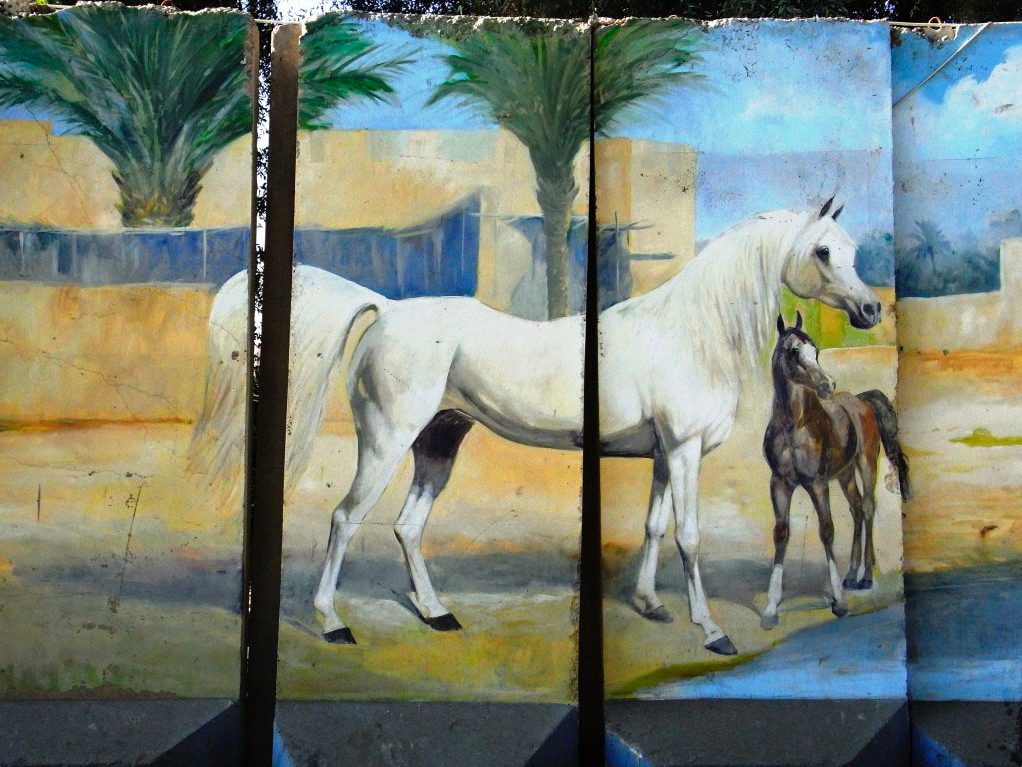
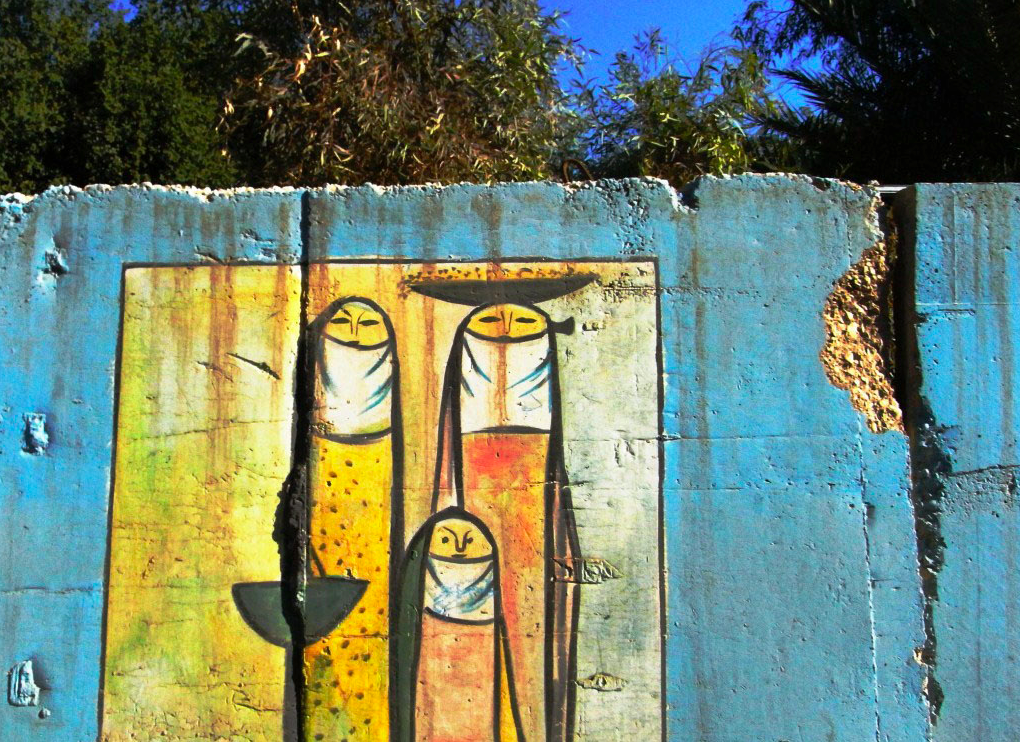
[Figs.6 and 7: Murals inspired by Iraqi masters, Faiq Hasan (left) and Jawad Saleem (right), Karkh. Images by C. Pieri, December 2009.]
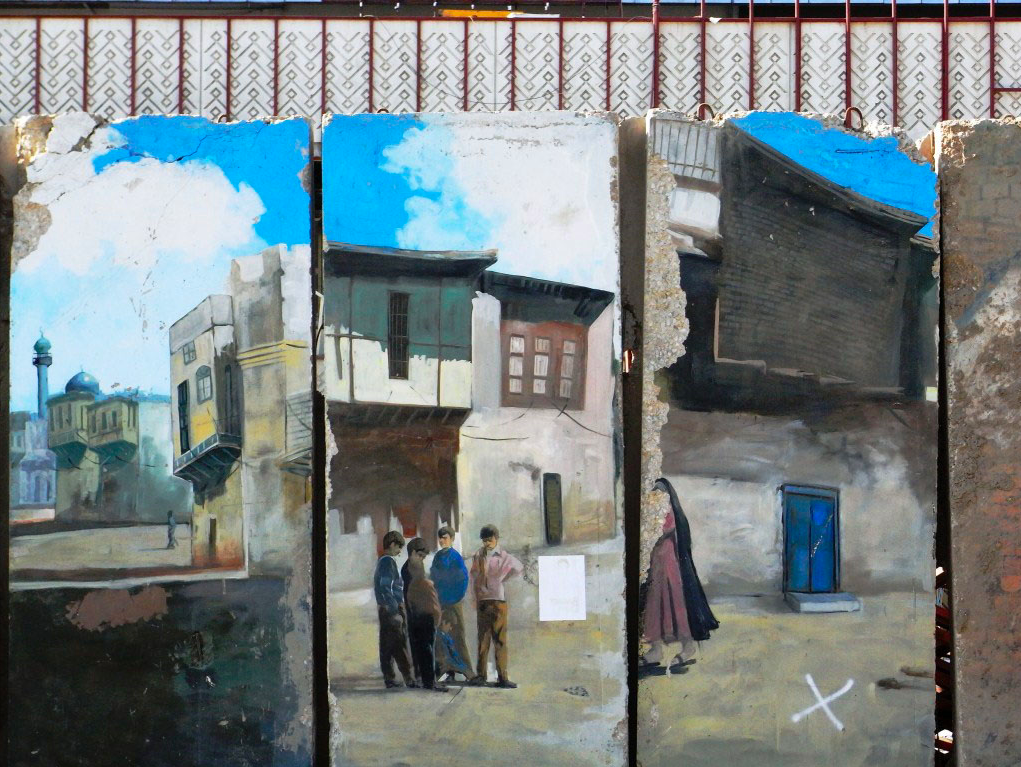
[Fig.8: The traditional and almost vanished Baghdad in a mural in front
of the Mansour Melia Hotel, Karkh. Image by C. Pieri, December 2009.]
Murals serve as part of a modern tradition of officially commissioned art in Iraq, and constitute a legacy of the 1958 Iraqi revolution that put an end to the Hashemite Monarchy created in 1921 in the aftermath of World War I, and the dismantling of the Ottoman Empire. The Monument of Liberty by Jawad Saleem and Rifat Chadirji on Tahrir Square, Faiq Hassan’s mosaic panel of Liberty on Tayyaran Square, or Revolution’s emblematic Torch in Kadhimiya Square by Qahtan Madfai (all from 1961), as well as more recent artworks such as the mosaic panel next to the Arts and Crafts Museum on Wathba Street (1980s), are all examples that testify that post-revolution Baghdad’s public spaces have always illustrated a well-established relationship between art and power. Furthermore, it is not the first time that the Iraqi past serves as a repository for a collective national identity: Mesopotamian grandeur and pre-Islamic symbols, far from being a novelty, were already regularly manipulated by different Iraqi governments after 1968 (Méténier 2006), especially in public architecture and ornamentation (Sethom 1995, Luizard 1994, Pieri 2008).
A Civil-War Like Temporality
Could these walls be seen as a temporary stage toward peace, as was the case for Belfast’s so-called “peacelines,” still in place twenty years after the end of the civil war (Ballif 2009)? Could their murals counteract the rampant narrative of sectarianism that now dominates the city, and deliver a sub-text in the shape of a common language based on a common pride able to transcend the current societal segmentation? It seems on the contrary that, with time, the 2007 walling strategy has contributed to emphasize the dividing lines between different neighborhoods, leading to a kind of “geography of fear” (Dorier-Aprill 2007). The strategy has ultimately had a counterproductive effect as it led to cropping up of “mini green zones” in Baghdad, where people have to rely on this segmentation. Each walled neighborhood has become a kind of isolated centrality—as occurred for instance in Beirut (Achrafieh) during the civil war—where shops, markets, and services are installed in former residential quarters. But, this centrality results from security measures that are constantly changing. Because of this, and unlike common ideas about the walling of conflict, these walls are movable, being constantly removed, and replaced according to reasons that are not made public. Such a suspended and contested urbanity might recall what is described as “the city of the war-yet-to-come” (Bou Akar 2012), with contours of possible militarization, and displacements often being redrawn, and with a reconfiguration of the binary "center- peripheries."
In the context of Baghdad (but it could perhaps apply to other cases), I argue that the moment a T-wall becomes a painted T-wall signals a shift from the short-term temporality of the international conflict to the mid- or long-term temporality of the civil war, as the walls act as a new kind of permanent urban furniture. Their murals can be seen as a response to the public imagery of the old regime, when Saddam Hussein’s portraits literally stifled the urban area. Furthermore, in the aftermath of the official beautification campaign, many private or other types of groups commissioned paintings on thousands of T-walls. Therefore, such walls act as a convenient marker to convey all kinds of political signs and sectarian propaganda, though often in an indirect and rampant mode. For instance, painted Iraqi flags which call for Iraqi unity can be found, quite logically, in front of official buildings like the Baghdad Mayoralty or Governorate. But they can also be found in predominantly Sunni areas such as Karkh or Adhamiya, as when the walls were installed most of the Sunnis in Iraq were militating for national unity to compensate for their numeric inferiority, and loss of political influence.
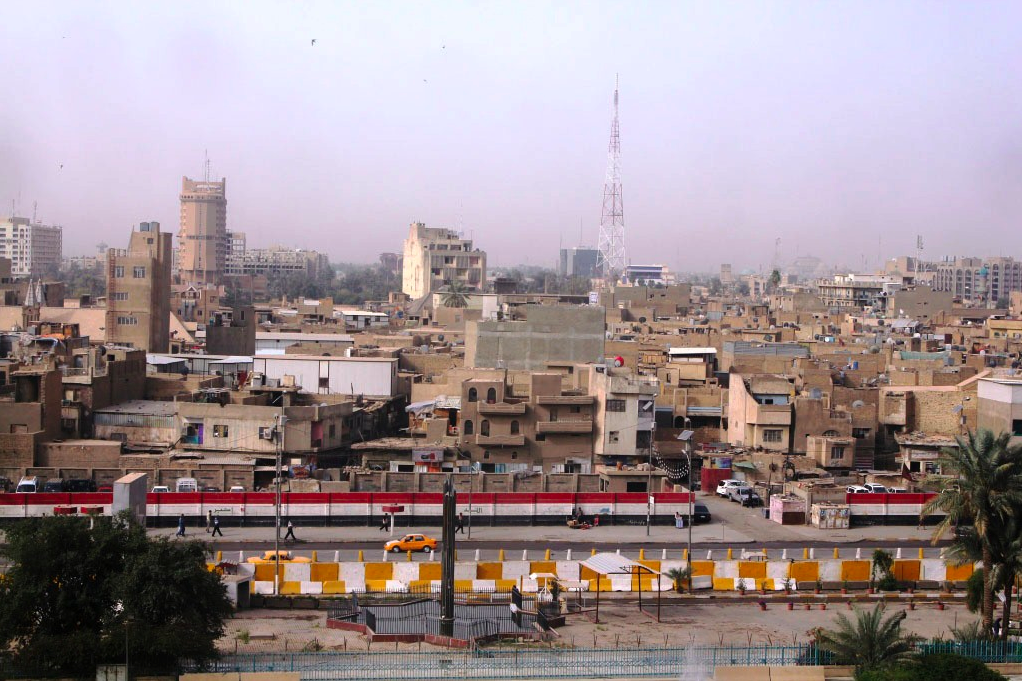
[Fig.9: The Iraqi flag along a three hundred meters wall on Jumhuriya Street, facing the walls
of the Baghdad Mayoralty compound, Rusafa. Image by C. Pieri, April 2012.]
On the walls located in Shi’ite areas, or in front of buildings belonging to Shi’ite official bodies (including police stations), floral ornamentation characteristic of Shi’ite imagery is recurrent. In many cases, the murals loudly attract attention with prominent emblems or bright colors (such as the green and yellow of the Supreme Islamic Iraqi Council). They emphasize the territorialization of public space through delimitated new spaces of power for all kinds of groups, private or public, political or sectarian.
.png)
[Fig.10: Red flowers and floral ornamentation on the walls in the compound of the French Embassy
(the murals were removed in 2012, but the walls are still there). Image by C. Pieri, February 2011.]

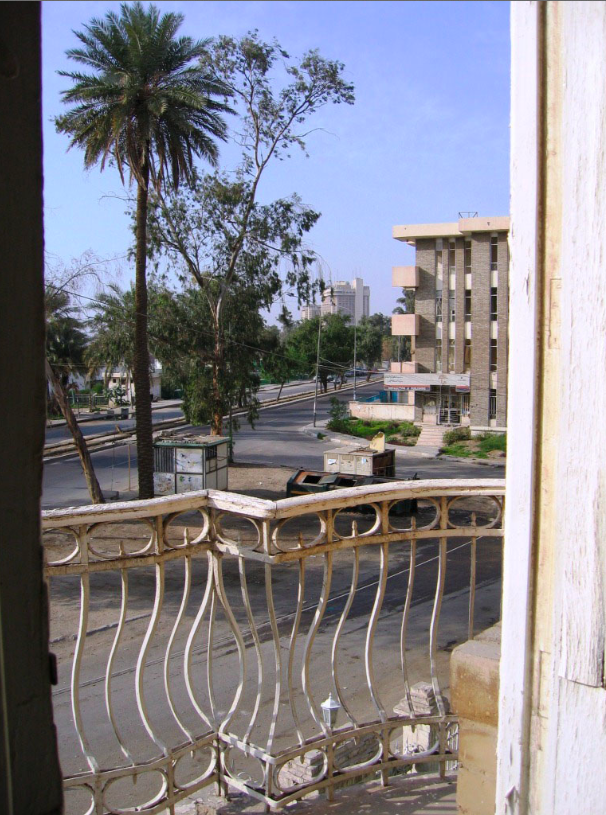
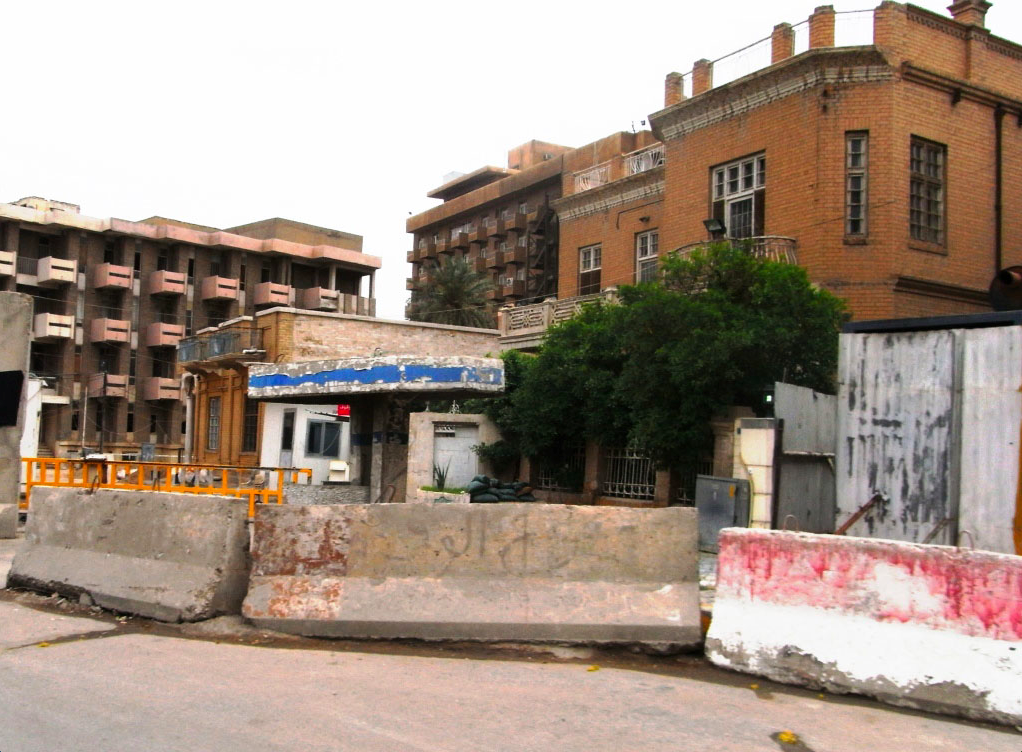

[Fig.11: Dar Dijla al-Funun, a house built in 1932 and transformed into an art gallery, on Abu Nuwas avenue at the intersection with
Abu Qalam Street, in 2005 (top left). Fig.12: The Abu Qalam Street intersection, September 2005 (top right). Fig.13: The walls of
a checkpoint in front of the headquarters of the Supreme Islamic Iraqi Council function as a new gate which turned the public space of
Abu Qalam Street intersection into a privatized compound, May 2011 (bottom left). Fig.14: The name and the party`s colors
were then added in order to become visible from afar, in December 2012 (bottom right). Images by C. Pieri.]

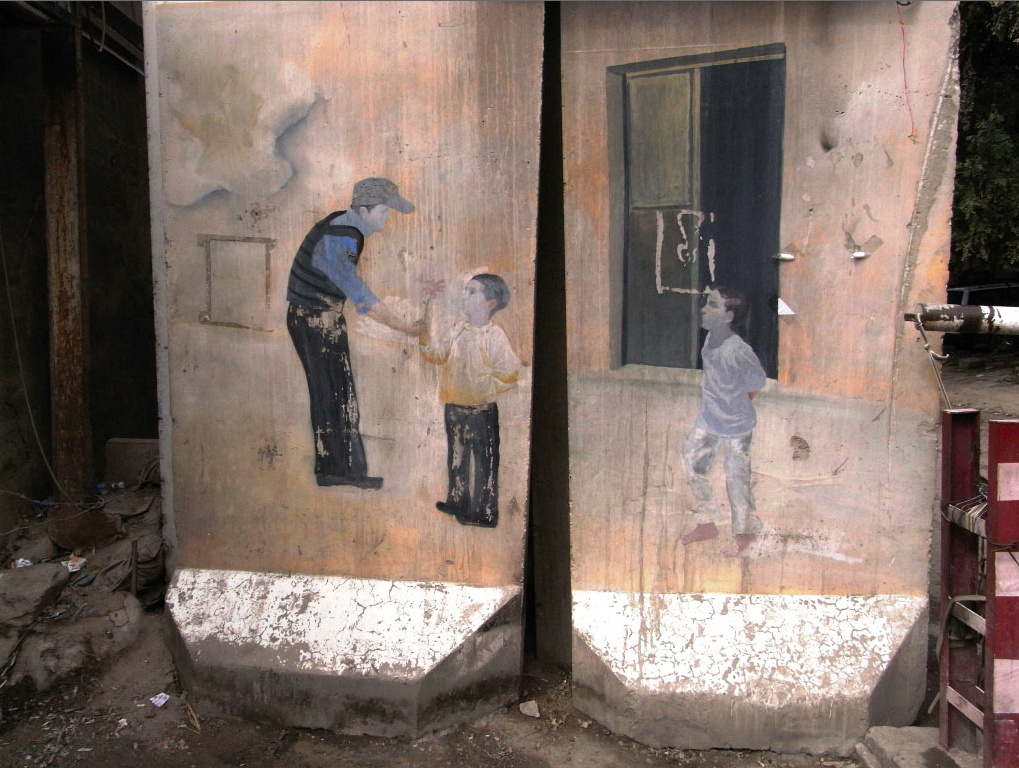
[Figs. 15 and 16: A police checkpoint of the Shi`ite group Hakim in Masbah. Beyond the scope of security (cars must be searched,
as indicated on the "education" image on the left), the wall has several functions: closing the street and privatizing what was formerly a
public space, delineating a new area of control under the group`s police, propaganda (as clearly shown in the mural across the same street, where a boy is offering flowers to the policeman). Images by C. Pieri, February 2011.]
Civil Resilience and Official Discourse
I asked the painter Kareem Risan, author of several paintings of "walls of the wartime" which express "the limits between neighborhoods" what he thought of these walls (private correspondence, 15 April 2012). He answered: “Can we talk of art, when there is no spontaneity?" Another painter I asked why there were no spontaneous images on the walls, answered: "The murals were an official tool of the former regime. Saddam was using walls. And now, again, people do not feel free, they are afraid to use them for their personal expression. Fear is still there.” If the artists are still alienated by the fear of power, can there be room for personal expression in public space?
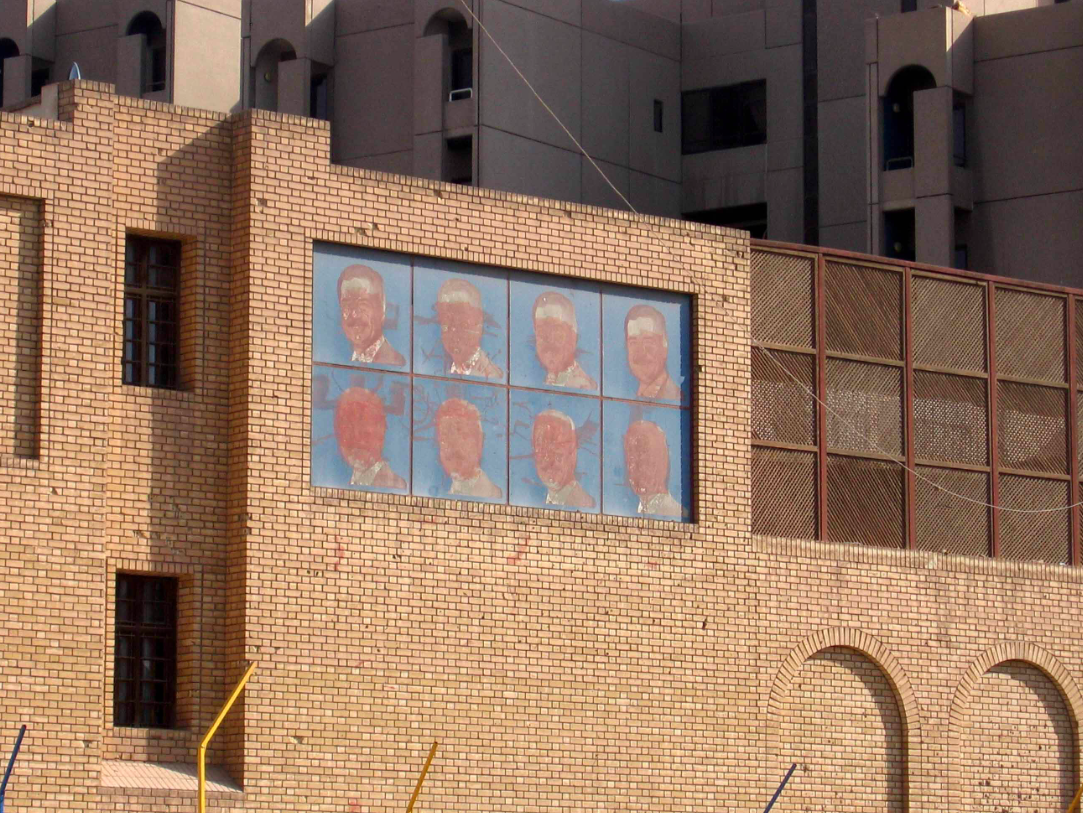
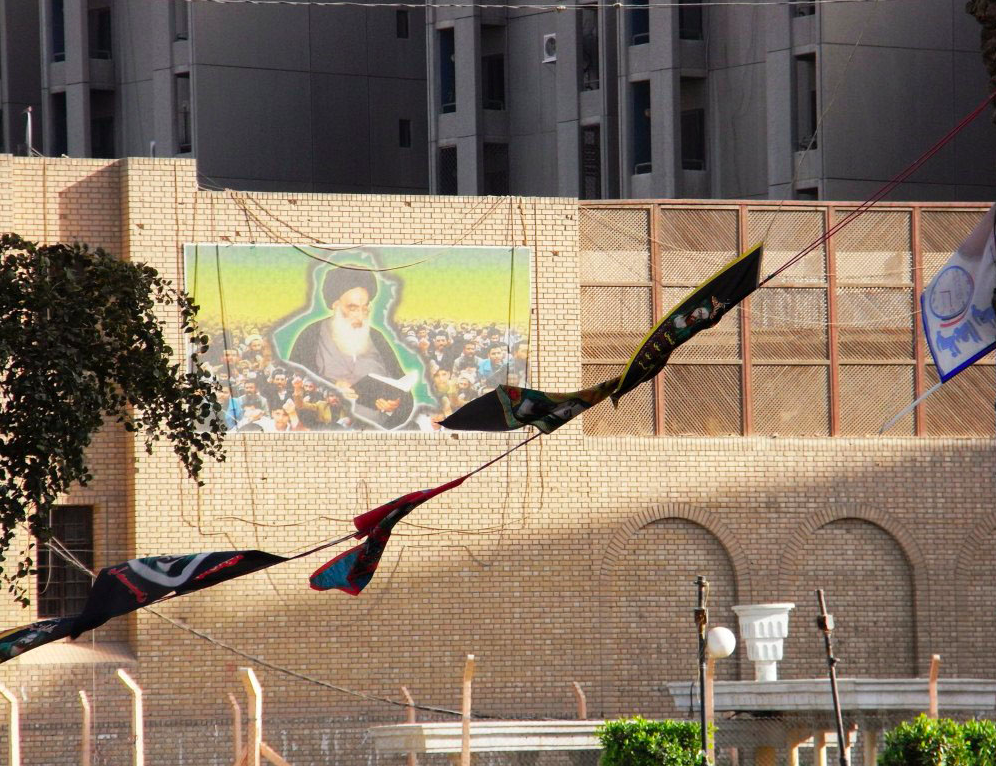
[Figs.17 and 18. Haifa Street, formerly a Sunni stronghold, with Saddam Hussein`s portrait in a Warholian-like style
(the picture was taken in 2004). It was replaced in 2005 by a photo of Ayatollah Ali Sistani. Images by C. Pieri, March 2010.]
Because they are not spontaneous, never implemented without official permission, and are supervised by the official authorities, Baghdadi T-wall murals are not examples of street art such as the tags of Beirut—which have been described as “a voice that screams to everyone passing them by” (Artlounge 2009)—or the spectacular murals in revolutionary Cairo. They constitute an urban scene, but within a framework, and limitations imposed by the power-holders, not by the artists. For that reason, even when they show talent, and when "they reach some kind of truth of poetry" (Kareem Risan, same correspondence), their images have neither the subversive potential nor the markedly individualized “visual signature” generally typical of graffiti. Also, far from being treated as works of art, part of these T-walls are constantly removed, and reused to erect other walls somewhere else, generally at night. In this process, paintings and slogans are dismantled, and randomly reassembled. Therefore, the meaning of the original mural is lost, and the wall reassumes its role as a mere barrier. Finally, contrary to what happens with the separation wall in the Palestinian West Bank, invested by a host of foreign artists, Baghdad is still as difficult to access as it was before the 2003 war, albeit for different reasons. How could its walls become a cause for foreigners?
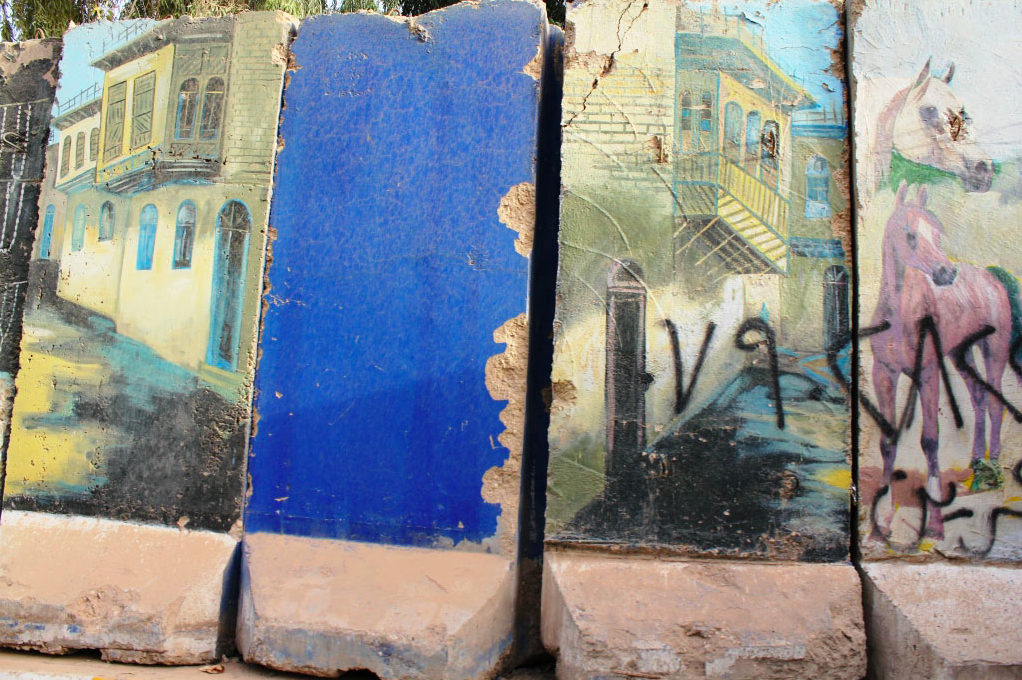
[Fig.19: When the walls are removed and replaced, their units are randomly reassembled, often at night.
Here in Jadriya, a patchworkwhere pieces of imagery common throughout the city can be distinguished
(traditional houses, wild horses). Image by C. Pieri, January 2012.]
In fact, the T-Wall murals in Baghdad are an integral part of the walling strategy itself. This is obvious when they are sectarian or political markers directly commissioned by groups or parties. But, even when they display icons of Iraq’s national unity, or grand Mesopotamian past, ordered by state institutions, the T-walls can be seen as legitimizing the official narrative. This narrative aims to portray that current social divisions, based on religious and sectarian differences, have disappeared. Within this official narrative, murals are treated as if they were plain murals, not murals painted on “blast walls.” Murals` images speak of unity and pride, whereas the walls upon which these messages are painted often demarcate urban spaces divided along ethnic and sectarian lines, and thus contradict these messages. They dramatize an urban space which becomes the backdrop for a staged fantasized common past, a set advocating a fragile Iraqi unity, constantly challenged by the political incapacity and/or reluctance to rule the capital as a unified entity. In that sense, the murals can be said to be the visual expression of a double discourse (national unity in words versus antagonistic reality in facts), which is a recurrent topos in Iraqi politics.
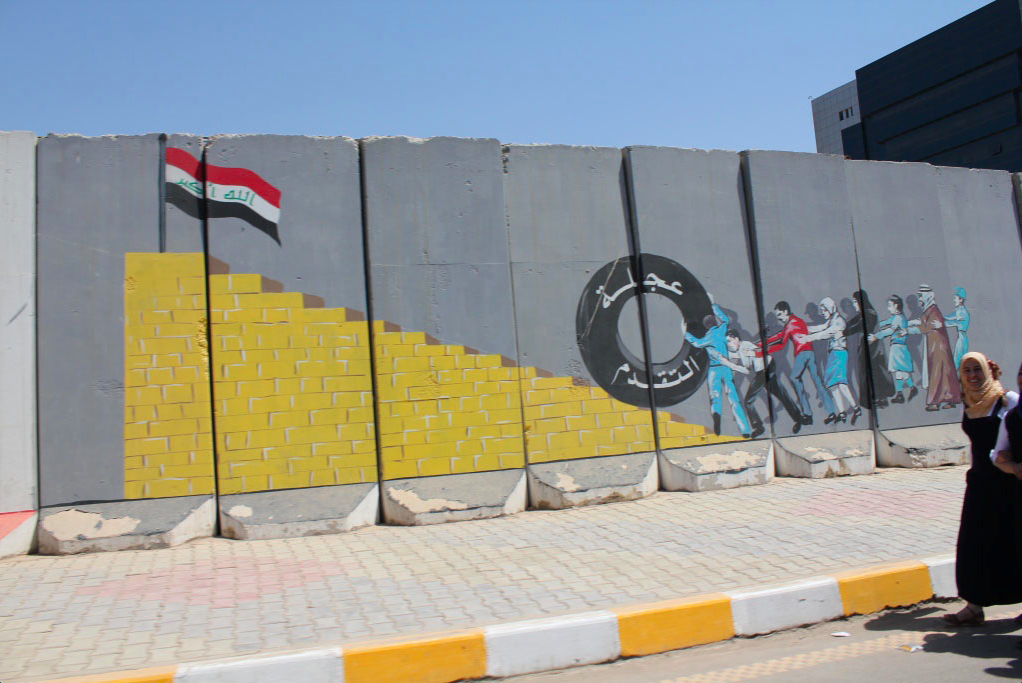
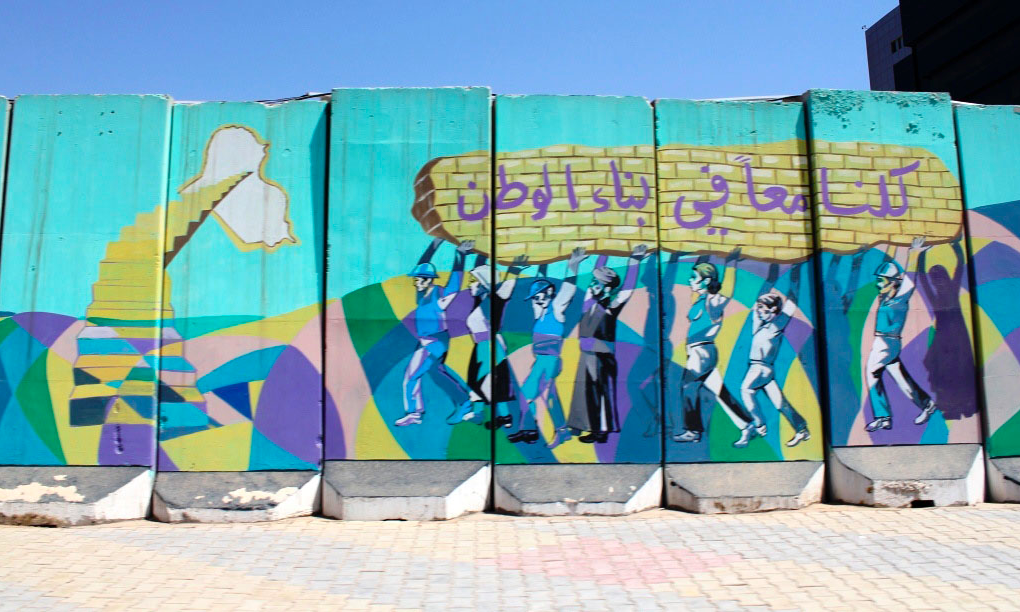
[Figs.20 and 21: Murals in front of the Ministry of Public Works, Karkh. They read: "The wheel of progress" (left),
and "Let`s all build the nation together" (right). Images by C. Pieri, April 2013.]
References:
Florine Ballif, “Les traces de la guerre civile: la pérennisation des peacelines à Belfast,” in Pérennité urbaine ou la ville par-delà ses métamorphoses, edited by Colette Vallat (Paris: L’Harmattan, 2009).
Elisabeth Dorier-Apprill and Philippe Gervais-Lambony (eds.) Vies citadines, (Paris: Belin, 2007).
Pierre-Jean Luizard, "Bagdad: une métropole moderne et tribale, siège de gouvernements assiégés," Monde Arabe, Maghreb-Machrek 143 (1994), 225-242.
Edouard Méténier, "L’historiographie irakienne est-elle réductible à un simple discours idéologique?" in Etats et sociétés de l’Orient arabe en quête d’avenir 1945-2005 (vol.1: Fondements et sources), edited by Gérard Khoury and Nadine Méouchy (Paris: Geuthner), 261-284.
Caecilia Pieri, "Modernity and its Posts in Constructing an Arab Capital: Baghdad’s Urban Space and Architecture,” Middle-East Studies Association Bulletin 42, no.1-2 (2008), 32-39.
Hafez Sethom, “Urban Renaissance in Baghdad,” Albenna 21-22, no.4 (1985), 76-79.
